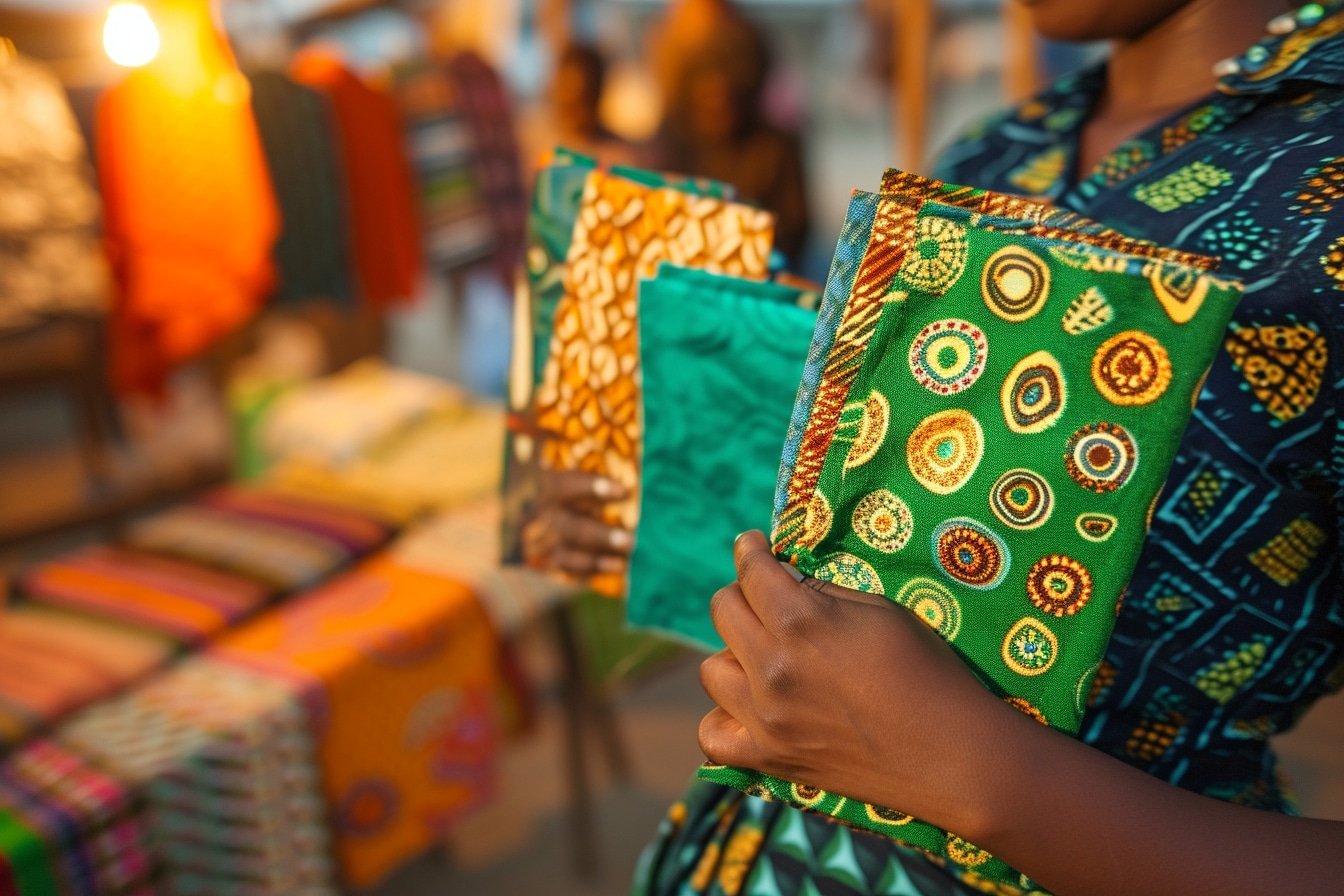African fashion is rich and diverse, with a deep history and strong cultural roots. Yet it has not remained confined to its original boundaries; it has evolved by integrating outside influences. Whether through the lightness of textiles or avant-garde cuts, the transformation is tangible. This striking stylistic hybridization shows how world cultures have played a role in the reinvention of fashion on the African continent. Click on African fashion for a glimpse of this creative effervescence.
The first point of our analysis will focus onWestern influence, which has shaped many aspects of traditional dress. Next, we’ll look in detail at the impact of Oriental motifs and the cut of Asian garments on African styles. Finally, the impact of globalization will be examined, revealing how it has both standardized and enriched the palette of African fashion expressions.
How have Western cultures influenced African fashion?
In the vast chessboard of international fashion, where each culture contributes its stone to the global stylistic edifice, the influence of Western cultures is undeniably felt in African fashion. This imprint is more than just the adoption of trends; it embodies a creative dialogue between tradition and modernity. Africa, with its textile wealth and emblematic motifs, welcomes Western ready-to-wear while infusing it with its aesthetic essence.
The introduction of tailoring, a colonial heritage par excellence, led to a metamorphosis of traditional cuts, which became more refined and structured. The use of fabrics such as tweed and denim in African clothing also illustrates this pooling of influences. Designers from the dark continent use these materials from elsewhere to revisit and reinvent native silhouettes.
Streetwear, a mainstay of today’s Western fashion, has also permeated African designers, who find it a fertile ground of expression for their unbridled inventiveness. These urban brands draw on their iconographic heritage to create captivating collections that rock the cobblestones of Accra and New York alike.
This transcontinental flow has led to the emergence of African brands on international catwalks, bringing a singular narrative where each model tells a personal story, fleshed out by age-old local know-how transfigured through a contemporary prism.
The impact of Asian influences on African styles
When it comes to stylistic métissage, Africa stands out for its ability to integrate and reinvent outside influences. Asia, with its centuries-old textile traditions, has not failed to leave its mark on African clothing. This impact is particularly visible in the choice of materials and motifs that now adorn fabrics worn on the continent.
African markets are now brimming with fabrics such as silk satin and organza, undeniably inspired by the Orient. Dragon motifs, representing strength and power in Asia, are also flourishing on contemporary creations, lending a transcontinental dimension to African visual identity.
Some traditional Asian cuts have been adapted to theimpact of Asian influences on African styles. A striking example is the adoption of the mandarin collar, characteristic of Chinese qipao, which finds its way onto fitted dresses or tunics made from typically African wax fabrics. This fusion creates a bridge between two rich aesthetic worlds, enabling African designers to offer pieces that tell a new story.
Asian color philosophy is gradually permeating trends in the African market. We’re seeing a bolder, more symbolic use of bright colors – which were already present, but are now finding innovative harmonies inspired by Asian palettes.
This mutual influence testifies to the creative richness arising from dialogue between different cultures, and reminds us how fashion is often used as a vehicle to express mutual respect and shared admiration between peoples.
The influence of globalization on traditional African fashion
Globalization, with its attendant intercultural exchanges and connections, has had a decisive influence on African fashion. The widespread dissemination of clothing trends and practices has opened up stylistic horizons, but also poses a considerable challenge to the authenticity and preservation of ancestral heritages. African designers are now navigating a space where local inspiration and global dynamics merge.
This cultural melting pot is illustrated by the emergence of pieces that cleverly combine traditional African motifs with cuts and techniques from the global fashion industry. Emblematic fabrics such as kente and wax are reinvented in new ways, oscillating between respect for the past and a desire for innovation. What’s more, this osmosis gives rise to hybrid creations where African textiles and contemporary designs coexist harmoniously.
Yet while mutual enrichment is obvious, some fear a potential erosion of the identity specific to traditional African outfits in the face of the steamroller of globalization. Faced with this, a new wave of designers is making the strategic choice of localism: by emphasizing the exclusive use of materials from the continent and constantly drawing on the vast well of local ethnic traditions for their creations, they are not only asserting their identity, but also driving a creative revival, thus inspiring the entire sector.
With its multiple repercussions, both economically and culturally, the question remains complex: how to capitalize on the benefits of this openness while safeguarding the integrity of the singularity that characterizes the richness of African textiles and designs? This delicate balance between global integration and authenticity is now at the heart of an ongoing dialogue between modernity and ancestral traditions.
FAQ Clichés & Stereotypes
It is used to describe a wide range of creations, although each piece has its own story to tell.
Absolutely, African fashion offers casual outfits for every season, offering a variety of choices for every occasion.
No, African fashion is not limited to intense colors; rather, it celebrates chromatic versatility in its creations.
No, African fashion deserves a nuanced appreciation beyond the term “exotic”, as it actively contributes to the global fashion scene.

